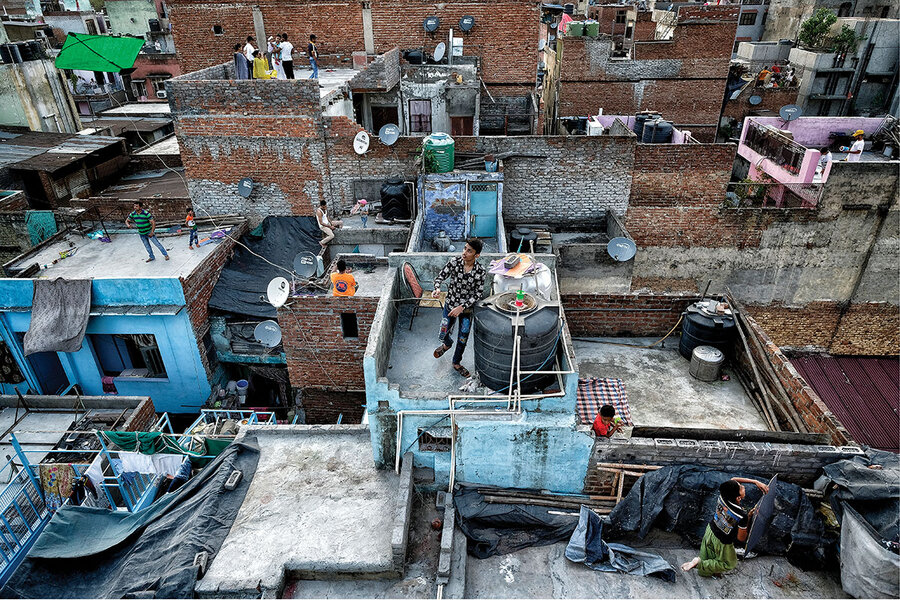In Pictures: The brothers saving India’s unappreciated scavenger birds
Loading...
| Delhi
When they were teenagers, Saud and Nadeem once found a wounded black kite and took it to the local bird hospital. But the hospital was run by Jains, whose vegetarian beliefs prohibited treatment of the carnivorous raptor. That scenario repeated as they grew up, until one day the brothers came up with a plan: They would treat the birds themselves.
Completely self-taught, they learned to care for the birds by watching videos, reading books, and seeking advice from a local veterinarian, funding bird care with income from their family business. They’ve now formalized their makeshift hospital to the point where they can accept donations.
Why We Wrote This
A story focused onTwo brothers in India began treating injured birds for a simple reason: because nobody else was. The result? Thousands of animals saved.
Most of the 2,500 or so birds that come to them each year have their wings cut by manja, a cotton string coated with crushed glass, used by kite-flying enthusiasts. The sanctuary sees a surge of wounded birds every year around Aug. 15, when Delhi’s sky is filled with kites to celebrate India’s Independence Day.
“It’s clear that the black kite is not the most beloved animal in the city,” says Nadeem, who, like his brother, doesn’t use a surname. “Who knows, if people were aware that these scavenger birds help the city reduce its waste by getting rid of thousands of kilos of garbage they feed on every day, maybe the perception of them would change.”
In a small room beneath the unpaved streets of the village of Wazirabad, in northeast Delhi, Saud tends to a black kite bird while his brother Nadeem does quality control on one of the boxes of the soap dispensers they sell. “After this operation it will be able to fly as if nothing had happened,” explains Saud as he stitches up the bird.
The cluttered room in the basement of a three-story building that floods every time it rains serves as office and storage space for the family business, as well as an operating room for Wildlife Rescue, the bird sanctuary founded and run by the two brothers.
As teenagers, Saud and Nadeem, who don’t use surnames, found a wounded black kite and took it to the local bird hospital run by Jains, whose vegetarian beliefs prohibited treatment of the carnivorous raptor. That scenario repeated as they grew up, until one day they decided to treat a bird themselves.
Why We Wrote This
A story focused onTwo brothers in India began treating injured birds for a simple reason: because nobody else was. The result? Thousands of animals saved.
“And that’s how it all started,” Saud recalls. “Every time we found an injured bird, we would rescue it to try to heal it.” Completely self-taught, they learned to care for the birds by watching videos, reading books, and seeking advice from a local veterinarian, funding bird care with income from the family business.
In 2010, they registered their rehabilitation center as an association, and began to receive some donations. In 2013 they moved from Old Delhi into a building in Wazirabad, which houses Saud’s family as well as the birds.
Alongside the two brothers is their cousin Salik, who takes care of the animals, feeding them, keeping the cages clean, rescuing them, and when the time comes, releasing them.
Most of the birds that come to them have their wings cut by manja, a cotton string coated with crushed glass, used by kite-flying enthusiasts. The sanctuary sees a surge of wounded birds every year around Aug. 15, when Delhi’s sky is filled with kites to celebrate India’s Independence Day.
Saud checks one of the 20 black kites that have arrived that day. The bird is still entangled in the manja, which has cut its right wing.
Nadeem estimates about 2,500 birds pass through their shelter every year. “It’s clear that the black kite is not the most beloved animal in the city,” he says. “Who knows, if people were aware that these scavenger birds help the city reduce its waste by getting rid of thousands of kilos of garbage they feed on every day, maybe the perception of them would change.”













